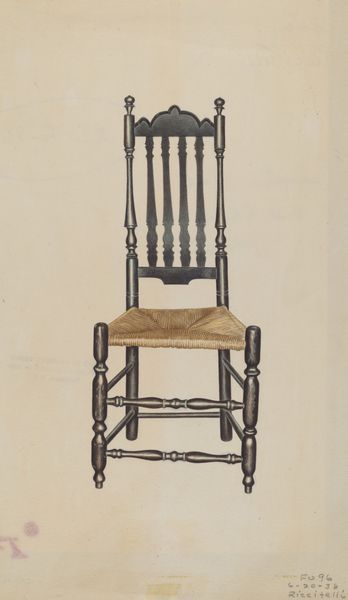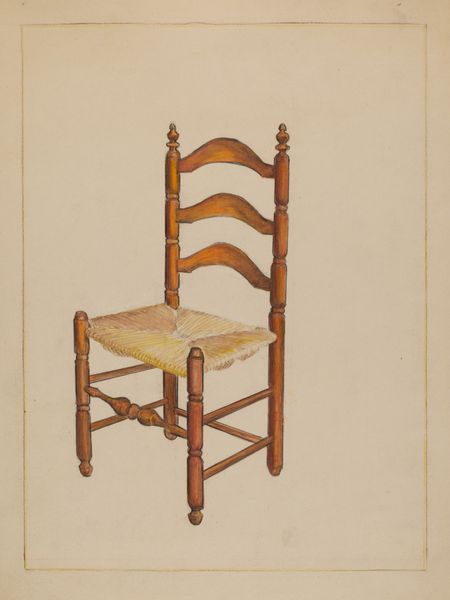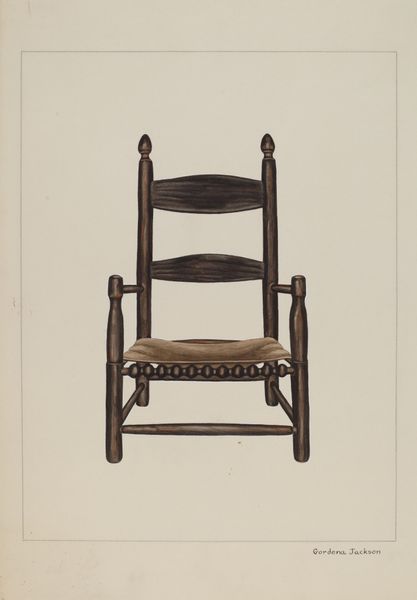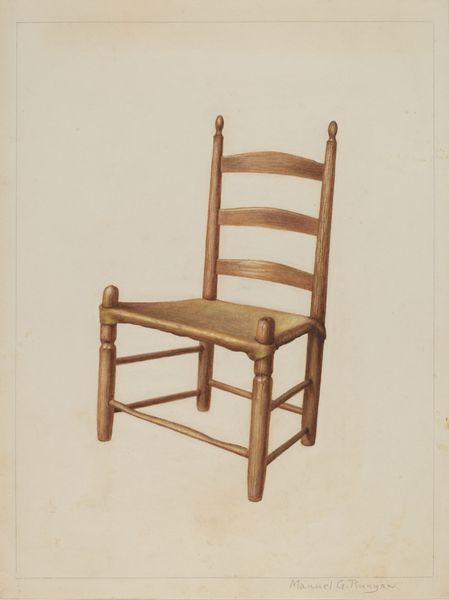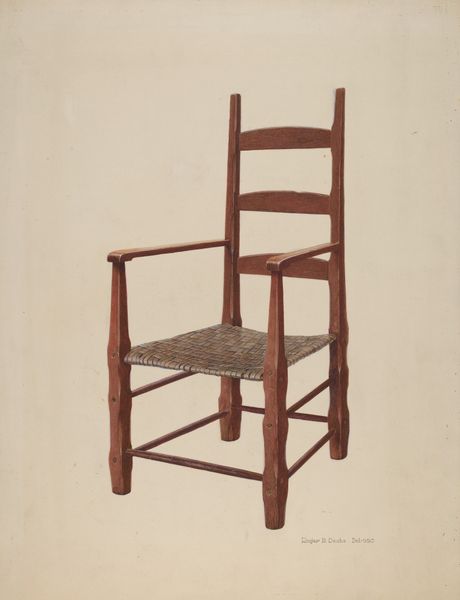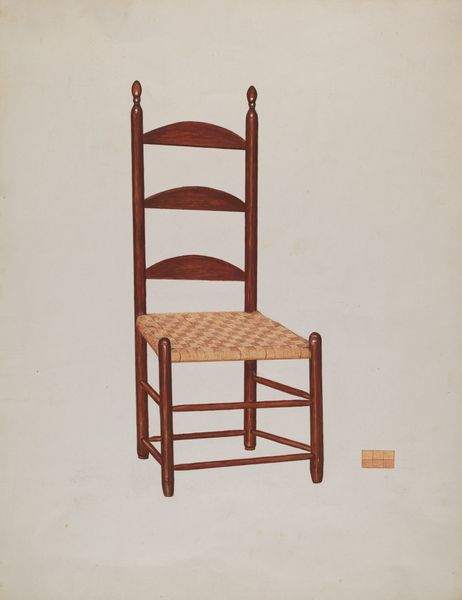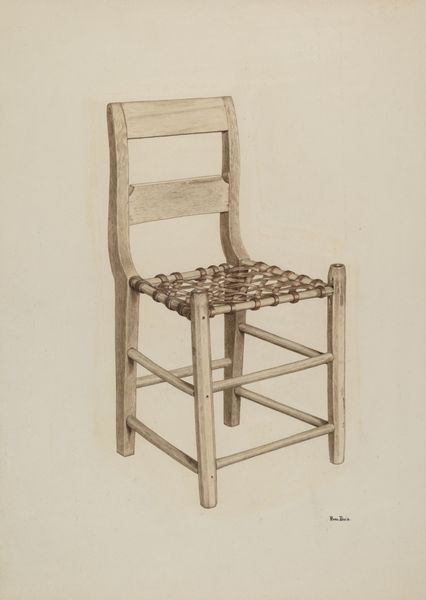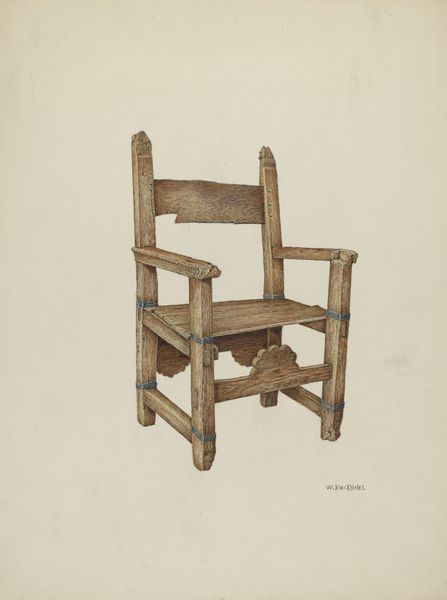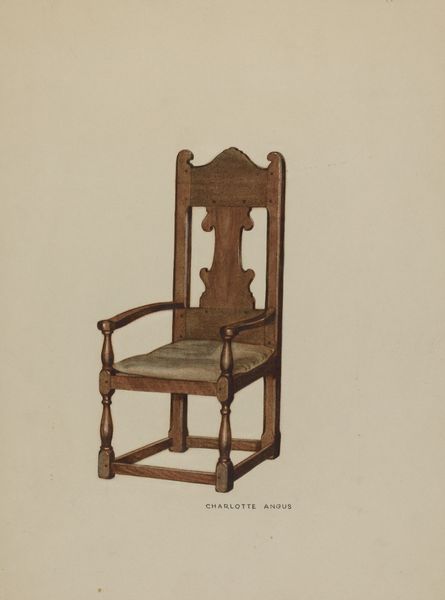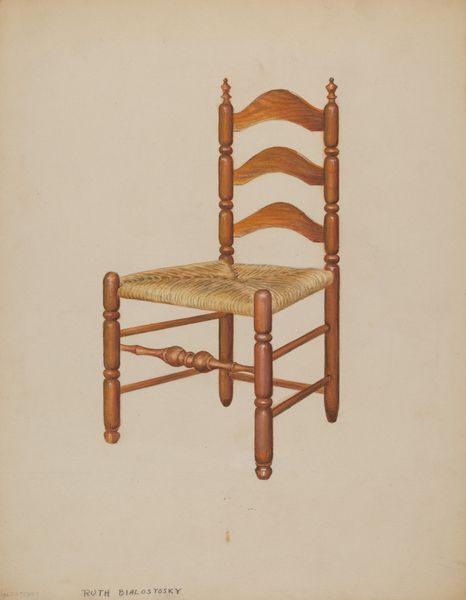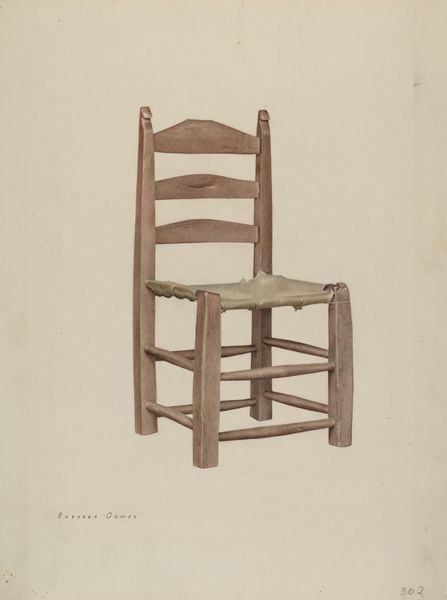
drawing, paper, pencil
#
pencil drawn
#
drawing
#
paper
#
pencil
#
academic-art
Dimensions: overall: 34.9 x 24.4 cm (13 3/4 x 9 5/8 in.) Original IAD Object: none given
Copyright: National Gallery of Art: CC0 1.0
Editor: So, this is Henry Murphy’s "Banister Back Chair," drawn between 1935 and 1942. It's a simple pencil drawing on paper, almost photorealistic in its depiction of this rather humble chair. What initially strikes me is how such a mundane object is given this formal treatment. What do you see in it? Curator: It’s fascinating how the seemingly mundane can reveal larger societal currents. Considering the period, the late 1930s and early 40s, this meticulous rendering of a common object takes on new significance. What public institutions do you think might have supported an artist creating this kind of detailed study of an everyday chair? Editor: Well, during that era, the WPA comes to mind. Were artists tasked with documenting aspects of American life, even something as simple as a chair? Curator: Precisely! Think about it: The WPA aimed to provide economic relief, yes, but also to create a cultural record. These detailed renderings helped create a national archive, almost a visual inventory, documenting material culture during a tumultuous period. It elevates this simple chair, doesn't it, giving it a historical weight it might not otherwise possess? Editor: It definitely does. So, it's not just a chair; it represents a conscious effort to preserve and perhaps idealize a certain vision of American life during the Depression era? Curator: Exactly. Consider how the 'academic art' style, combined with the subject, speaks to a yearning for stability, tradition, and even perhaps a simpler past during times of immense social change and uncertainty. Even the choice of a "banister back" design connects us to a longer history of vernacular design. Editor: That’s given me a new perspective. I was initially focused on its aesthetic qualities, but you’ve revealed a whole layer of historical and political context I hadn’t considered. Curator: That’s the power of art history! It teaches us to look beyond the surface and understand how socio-political forces shape both the production and reception of even the most ordinary objects.
Comments
No comments
Be the first to comment and join the conversation on the ultimate creative platform.
